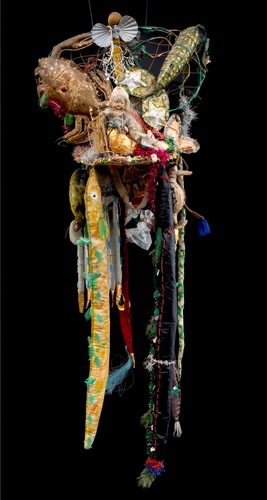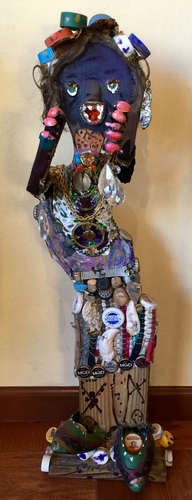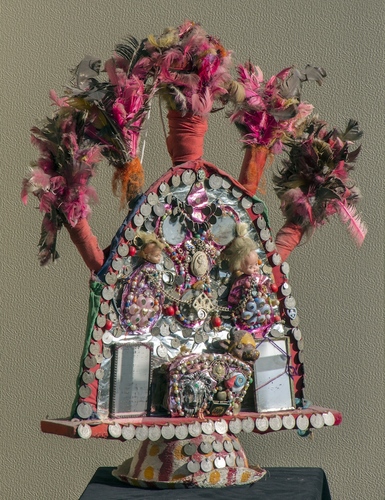Recently we had a chance to visit Hector Pascual Gallo Portieles (“El Gallo”) - a former barber, then diplomat, now visionary artist/obsessive collector - and his “Garden and Gallery of Affections”, the yard in front and the interior of his humble apartment.
We arrived by public bus with no prior appointment. We asked our way to his front door and knocked. El Gallo, now in his nineties and walking with a cane, opened the door, and with a wide smile he let us into his own world. For the next several hours we walked around in awe of the installations we were seeing, and of their maker.
Almost 20 years ago, during one of my visits to Salvador, Bahia, I came across an incredible, don’t know what to call it - carnival costume / wearable altar / art brut installation / outsider art assemblage. A dozen and a half years later I lent the piece to a spectacular exhibition at the American Folk Art Museum in New York City: When the Curtain Never Comes Down: Performance Art and the Alter Ego. The maker of this incredible work is Raimundo Borges Falcão, about whom not much is known. The exhibition produced a fabulous catalog. I wrote a page about Borges Falcão and his incredible work:
I met Derek Webster by accident in 2001 when I got lost driving around South Chicago and made a wrong turn. It wasn’t supposed to happen that way.
Each June, thousands of Ecuadorians flock to indigenous highland communities like the ancient village of Pujili in the Andean province of Cotopaxi. The occasion is Corpus Christi, a week-long, boisterous pageant whose highlight is the parade of El Danzante. This festival, celebrated throughout Ecuador’s highlands, is like no other, a joyous pagan ritual honoring sun and earth and harvests blended with Catholic elements.





